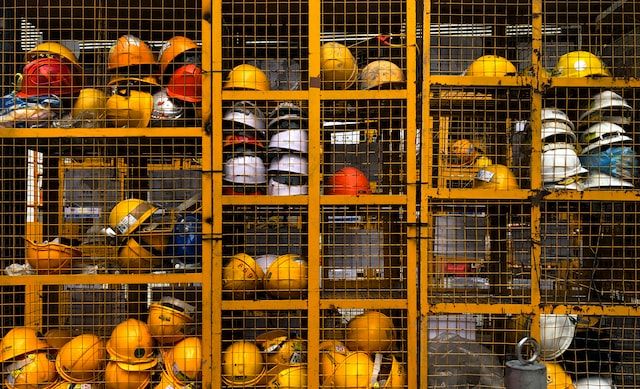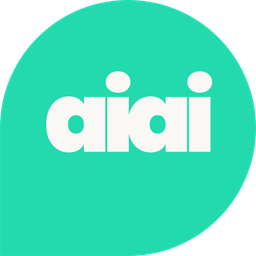The manufacturing industry has quickly adopted automated solutions from Industry 4.0. Among the advanced technologies being used, such as artificial intelligence, deep learning, machine learning, and more, computer vision has taken center stage.
Computer vision in manufacturing is revolutionizing various processes through high-quality cameras, expert data, and more, that allow for overall reduced costs.
In this article, we go over a few computer vision use cases in manufacturing, including:
- Barcode reading
- Predictive maintenance
- Reduction of defects
- Safety improvement
- Tracking and tracing
- Digital lean manufacturing
- Package inspection
Barcode reading
Most modern products have a barcode for identification purposes, and manufacturing companies need to ensure that products have the right barcodes printed on them before they’re dispatched to the market.
But reading, identifying, and processing what can be millions of barcodes is time-consuming and labor-intensive. Employees simply can’t do it at scale, and errors are inevitable. This is where computer vision systems can help.
Mobile devices and cell phones, for example, need extremely small printed circuit boards, and manufacturers need to produce higher and higher volumes of these boards for an ever-growing market. This leads to a process known as panelization.
A number of identical circuit boards are printed onto a large panel, and each individual circuit is separated by a machine for final testing. The computer vision solution PanelScan was developed to accurately read the barcodes on the boards, as previously employees used handheld barcode scanners.
Systems like PanelScan can divert faulty products or incorrect barcodes for assessment.

Predictive maintenance
The use of artificial intelligence in manufacturing is widespread. Machine learning and IoT devices are great for data monitoring on both machines and components; predictive maintenance is a process that collects this data and identifies signals to take corrective action before machinery breaks down.
In the automotive industry, a minute of downtime in a factory can cost US$22,000 – unplanned downtime can’t be recovered and companies still need to cover their costs. Computer vision can help you stay on top of things to prevent this unexpected downtime and keep your costs low. How? By alerting employees of deviations in metrics, so they can proactively carry out maintenance.
Reduction of defects
Computer vision in manufacturing can do more than just prevent machines from breaking down – identifying product defects manually can be difficult, and any missed defects can lead to not only increased production costs but also customers being dissatisfied.
A surface inspection system called WebSPECTOR identifies defects and stores their images and metadata, so that item defects can be classified according to their type and assigned a grade. This makes it easier to separate between different types of defects.
Similarly, a real-time deep learning system tested with different AI algorithms like YOLOv3, a single shot detector (SSD) neural network with a 98% accuracy rate, and Faster-RCNN can also effectively detect defects.
Safety improvement
Worker safety is vital, particularly in industries like manufacturing, where the risk of injury is higher. Failure to adhere to safety standards can lead to serious injury or even death, and even though factories have cameras to monitor employee movement, the process is mostly manual.
AI-powered computer vision processes can improve site management services significantly. Komatsu Ltd, for example, partnered with NVIDIA for safer and more efficient job sites. This partnership integrates NVIDIA’s Jetson AI platform into excavation, mining, and drilling machinery by combining real-time cameras and video analytics for improved safety and higher efficiency.

Tracking and tracing
Pharmaceutical companies have strict regulations to follow when making sure that their products are tracked and traced from the production line to the end user. A global unique identifier, or GTIN (Global Trade Item Number), is typically used to track packages worldwide.
Products have details like expiration dates, serial numbers, manufacturing dates, and more, and systems can automatically generate global unique identifiers in a master database to later be used when data is being verified in the production process.
Computer vision solutions can use high-tech cameras to read this data from labels while also doing an optimal character recognition of the printed text. After the latter’s been read, the system compares it against a master database to validate whether the system is printing labels matching the stored data. Unreadable or non-matching codes can then be discarded.
Digital lean manufacturing
Lean manufacturing is a production process that tries to maximize productivity while minimizing waste in manufacturing operations. Industry 4.0 technologies transform these lean manufacturing processes to offer a data-driven approach to both automation and decision-making through intelligent technologies.
Computer vision is a key part of the digitalization of manufacturing plants. Deloitte estimates that this transformation from lean to digital lean can generate a marked improvement in EBITDA – earnings before interest, taxes, depreciation, and amortization – of around US$20 million a year.
Through the use of computer vision systems, companies can recognize and track employee footfall to measure process efficiency, optimize workloads, and provide analytics to detect defective equipment.
Packaging inspection
For some companies, it’s important to count the number of manufactured pieces before they’re packaged. Doing this manually can lead to many errors, and it’s something that’s more prevalent in retail and pharmaceutical products.
Computer vision systems in packaging processes count the number of manufactured pieces and check if packaging standards are being followed. After packaging, these systems can also inspect for damage on the packaging so that products arrive at their destination in one piece.
When it comes to tablets or capsules, for example, computer vision can help check for broken or partly formed units. Photos are taken on the production line and transferred to a dedicated computer to process these images, checking if the tablets are the right length, color, and width.



 Follow us on LinkedIn
Follow us on LinkedIn



